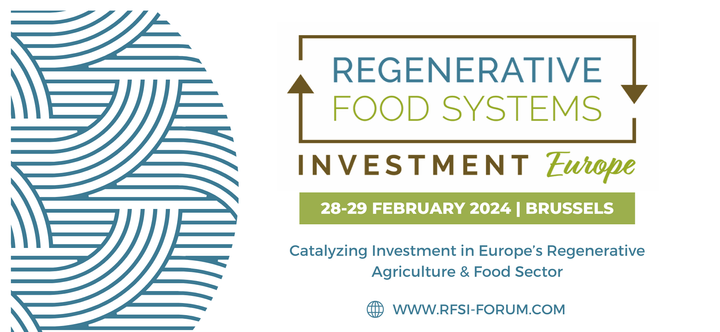Regenerative Agriculture Metric Series — Part 3: Food Waste Reduction
This blueprint outlines a set of key performance indicators (KPIs) identified by a working group of regenerative agriculture experts and practitioners, led by Proof and Trailhead Capital. The blueprint is designed to help regenerative agriculture investors and businesses select industry-specific metric sets and promote harmonization for impact measurement. It’s intended to be broadly applicable to investors and businesses who invest in or operate directly managed land, as well as those who invest in or provide upstream and downstream services in agricultural supply chains.
This blueprint covers the third of six impact categories to be addressed by the working group:
- Expand the amount of regeneratively managed land
- Reduce atmospheric carbon
- Reduce food waste ⬅
- Conserve water
- Improve food nutrition and nutrient density
- Increase biodiversity
Impact Category #3: Reduce Food Waste
Outcome KPIs
The definitions for the Outcome KPIs follow the Wasted Food Pathways from the EPA Wasted Food Scale and are aligned to the European Union Food Waste Measurement Scheme, with the goal of maximizing the total waste prevented.
Focus Area 1 - Prevention - Highest cost savings and environmental impact
- Total Food Waste Prevented
- Food waste prevention refers to avoiding the generation of excess food waste at the source by producing, buying, and serving only what is needed. Food waste prevention may include:
- Harvest optimization
- Enhanced product distribution
- Storage optimization
- Refined product management
- Maximized product utilization (e.g. upcycling of edible parts and scraps into new food items during production or manufacturing)
- Reshaping consumer environments
- Waste tracking and analytics
Focus Area 2 - Rescue - Recovering food for human consumption
- Total Food Donated
- Food donated refers to the combined amount of wholesome food that is rescued, redistributed, or transformed into food products to prevent wastage, nourish people, and address food insecurity. Food donation may be sourced from various points in the value chain. Examples include, but are not limited to:
- Surplus produce from farms
- Unsold items from grocery stores
- Excess meals from cafeterias
- Food donated refers to the combined amount of wholesome food that is rescued, redistributed, or transformed into food products to prevent wastage, nourish people, and address food insecurity. Food donation may be sourced from various points in the value chain. Examples include, but are not limited to:
Focus Area 3 - Recycling - Diverting food from landfill through value-add streams
- Total Food Used for Animal Feed or Unharvested
- Food used for animal feed or unharvested is the amount of food diverted towards feeding animals or left unharvested in fields due to labor shortages, environmental issues, or market conditions.
- Total Food Used for Industrial Compost or Anaerobic Digestion (Beneficial Use)
- Composting is the controlled decomposition of organic materials by microorganisms.
- Anaerobic digestion involves breaking down organic materials in an oxygen-free environment, yielding biogas for renewable energy; beneficial use indicates that the resultant digestate or biosolids are used for a purpose, including as fertilizer, soil enhancer, or animal bedding.
Focus Area 4 - Waste - Least preferred option for surplus management
- Total Food Applied to Land or Anaerobic Digestion (Disposal)
- Application to land includes any wasted food from the manufacturing and processing sectors that is applied to fields as a soil amendment, including spreading, spraying, or injecting on or below the soil’s surface.
- Anaerobic digestion with disposal refers to digestate or biosolids that are delivered to a landfill instead of having beneficial use.
- Total Food Sent to Landfill, Incinerated, or Sent Down the Drain
- This metric is intended to capture the amount of food that is sent to landfill, incinerated, or sent down the drain via the sewer system.
Optional Outcome KPIs
The following associated impacts may be estimated using industry methodologies (see recommended tools and resources below) based on the weight of the 6 Outcome KPIs above. To estimate the following metrics, it is essential to know the weight of food that falls under each of the 6 Outcome KPIs at each stage of the value chain.
- Total Greenhouse Gas Emissions (Scopes 1-3): This metric is intended to capture the estimated amount of Scope 1, 2, and 3 emissions in metric tons of carbon equivalent that result from the Food Waste Pathways reported in the Outcome KPIs. For further guidance on GHG emissions measurement, entities should refer to the blueprint for Atmospheric Carbon Reduction.
- GHG Emissions Avoided (Scope 4): This metric is intended to capture the total emissions avoided in metric tons of carbon equivalent that result from the Food Waste Pathways reported in the Outcome KPIs. For further guidance on GHG emissions measurement, entities should refer to the blueprint for Atmospheric Carbon Reduction.
- Total Land Use: The estimated land use in hectares that results from the Food Waste Pathways reported in the Outcome KPIs.
- Land Use Saved: The estimated land use in hectares saved as a result of implementing Food Waste reduction activities.
- Water Use: The estimated water use in cubic meters that results from the Food Waste Pathways reported in the Outcome KPIs.
- Water Use Saved: The estimated water use saved in cubic meters that results from implementing Food Waste reduction activities.
Additional Guidance
- For each of the KPIs above:
- Organizations should specify the tools, methodologies, or protocols used for calculations.
- Organizations should include food, inedible byproducts, and drinks that are removed from the supply chain, in accordance with the FLW Protocol - Food Loss and Waste Accounting and Reporting Standard. Packaging waste is not included in this impact category and should be accounted for separately.
- Organizations should specify the FLW Protocol boundaries used to determine food waste impact, including:
- Food categories (e.g. fruit and vegetables, soft drinks, meat, grains)
- Value chain stage(s)
- Geographic borders (e.g. grower - location of farm, retailer - countries of operation)
- Organizational units (e.g. grower - number of fields, retailer - number of stores, manufacturer- number of processing plans)
- See additional details in the FLW Protocol - Food Loss and Waste Accounting and Reporting Standard
- For each of the mandatory Outcome KPIs, organizations should calculate:
- The weight of food in metric tons or other applicable weight unit
- Food per Wasted Food Pathway (see Outcome KPIs above) as a percentage of total food produced, calculated by the equation: Weight of Food for each Wasted Food Pathway (e.g. Weight of Food Donated or Upcycled) / Total Weight of Food Produced
- Optional additional units may include:
- Food waste intensity in metric tons per one million in revenue
- Equivalent number of meals wasted or recovered as a result of the Food Waste Pathways
- Estimated monetary value created as a result of food surplus redistribution
- The scope of these KPIs includes land or facilities directly controlled by the organization (i.e., land for which the organization controls land use through direct operation or management) and land or facilities indirectly controlled, supported, or influenced by the organization (e.g., purchase contracts, sourcing from farmer cooperatives, and providing products or services to farmers that cultivate and manage land).
- As applicable, organizations should separate data and results for directly controlled versus indirectly controlled, supported, or influenced land or facilities.
- There are many tools and resources available to assist organizations to calculate their food waste footprint. Tools used by some working group members include:
- FLW Protocol, Food Loss and Waste Accounting and Reporting Standard
- ReFED Impact Calculator
- Estimate GHG Emissions, Water Footprint, and Meals Recovered
- EPA Waste Reduction Model (WARM)
- Estimate energy, GHG Emissions, and economic impacts
- WRAP Food Surplus and Waste Data Capture Sheet
- FLW Protocol, Connecting Food Loss and Waste to Greenhouse Gas Emissions: Guidance for Companies
- World Wildlife Fund, Creating a Unified Approach to Measure Loss on Farms Globally (beta)
- ReFED Food Waste Monitor
- Demonstrate the magnitude of food waste by sector, state (U.S. only), and time period
- U.S. EPA reports on Impacts of Wasted Food: Upstream and Downstream
- ReFED Food Waste Recommendations by Stakeholder
- Feeding America Estimation of Monetary Value of Food Recovered
Interested in learning more about the Regenerative Agriculture working group? Email us at community@proof.io!
Interested in joining Proof’s Regenerative Agriculture community to gain access to resources, training, and community discussions? Fill out our Community Interest Form.
About Trailhead Capital

Trailhead Capital is a mission-driven investment firm seeking to create outstanding financial, societal, and ecological returns by backing entrepreneurs who are building the regenerative future of food and agriculture.


